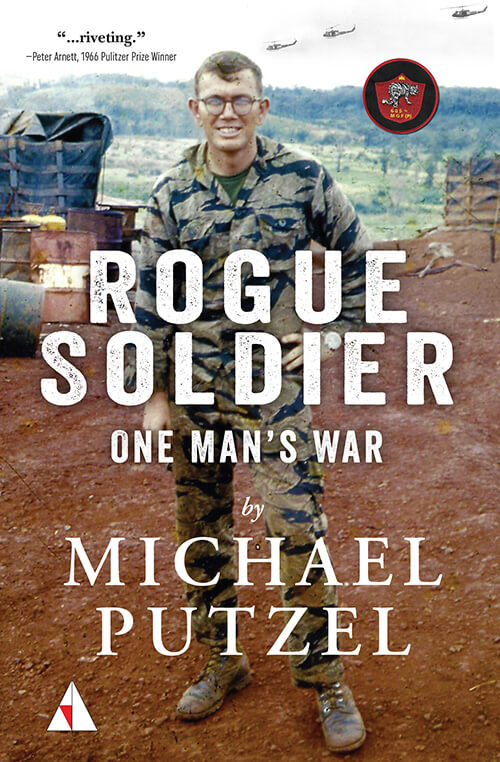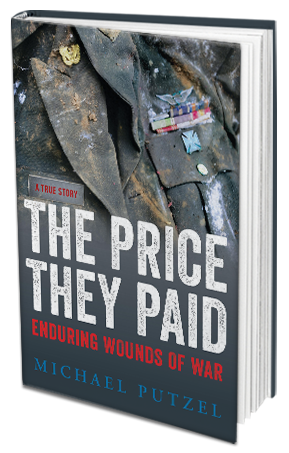Blog
Gone, but not forgotten
Posted by Michael Putzel • January 16, 2020
WASHINGTON, Jan. 14 – The remains of four war photographers and their companions shot down in Laos during the Vietnam War were removed from the defunct Newseum here Tuesday and returned to U.S. military custody for safekeeping until a permanent resting place is found.
| In an informal gathering that included the son and a grandson of famed LIFE magazine photographer Larry Burrows, who was killed in the helicopter crash on Feb. 10, 1971, the museum’s registrar and collections director unscrewed a dedicatory plaque and removed a small stainless steel box from beneath the floor of the Journalists Memorial and delivered it to a military archaeologist for storage at a laboratory at Offutt Air Force Base in Omaha, Neb. |
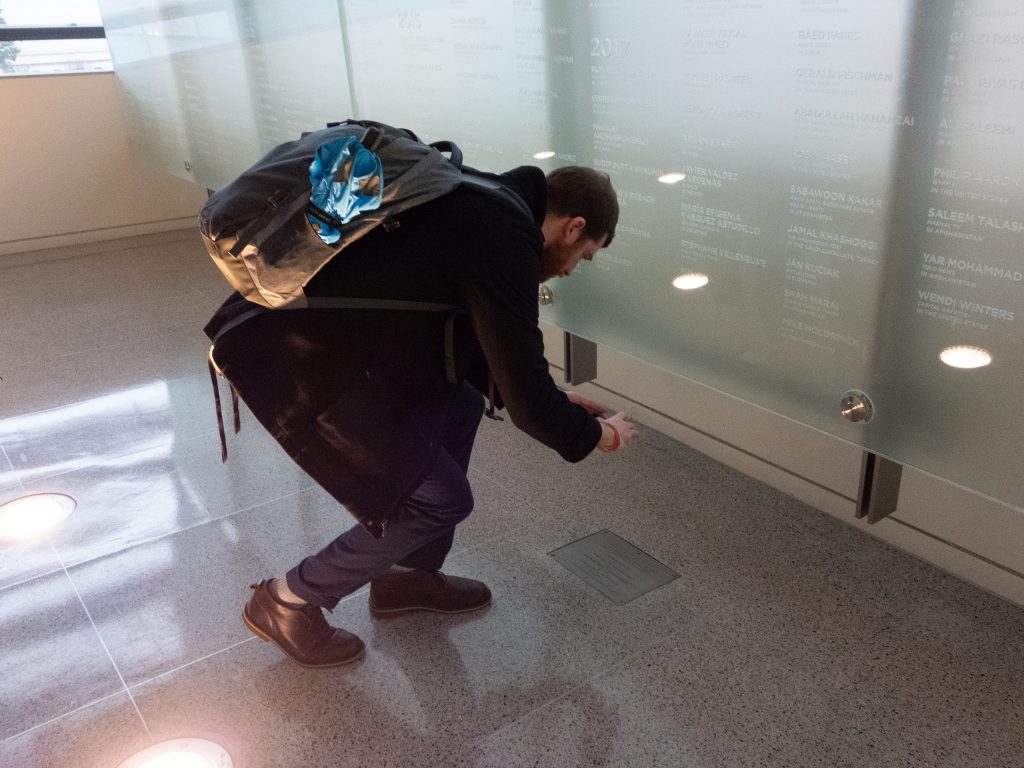
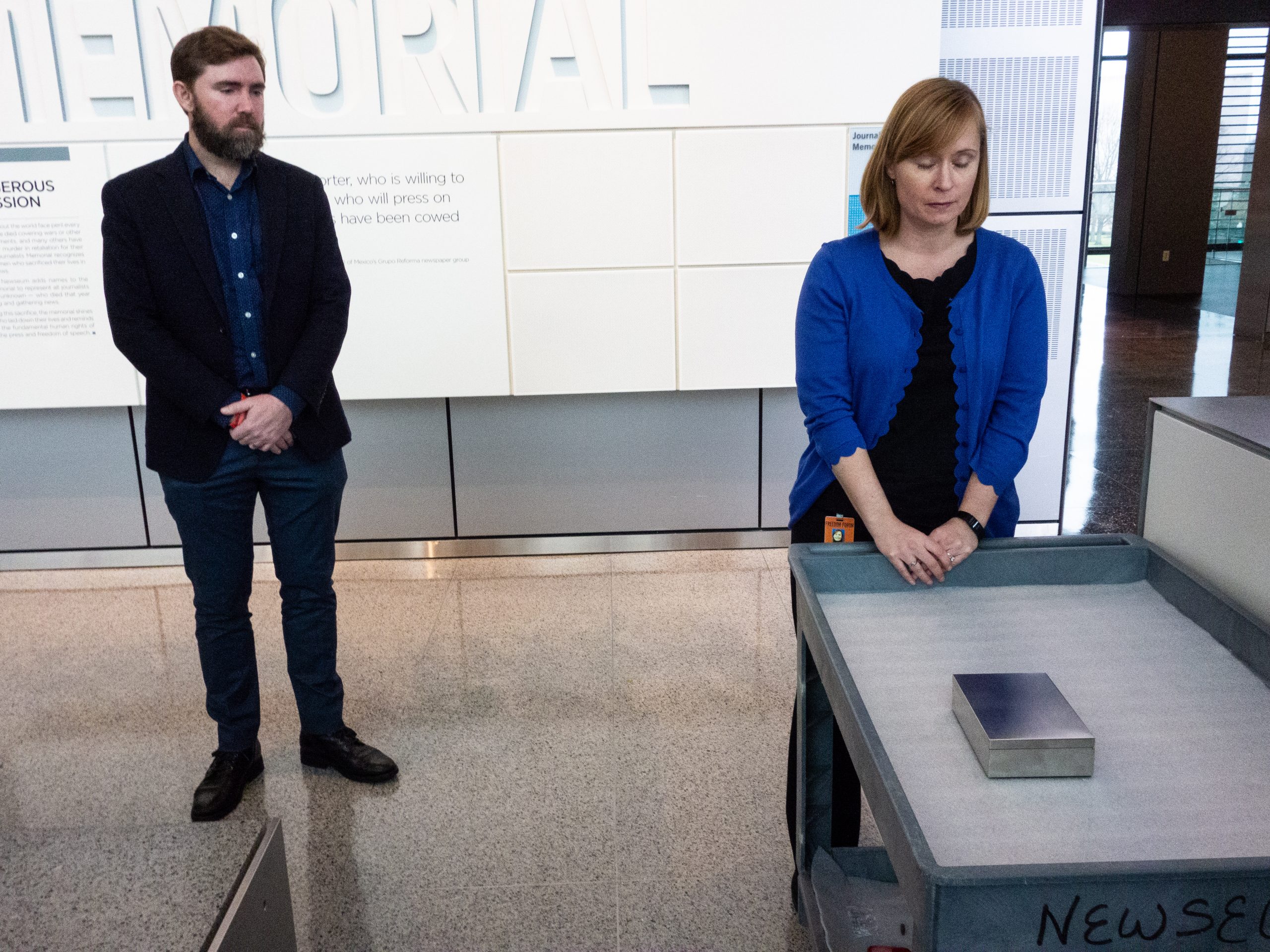 |
| Maeve Scott (right), Newseum registrar and collections director, preparing to transfer box of remains to military archeologist Jesse Stephan (left). Photo/Michael Putzel. |
The civilian photographers, in addition to Burrows, were Henri Huet of The Associated Press, Keisaburo Shimamoto of Newsweek and Kent Potter of United Press International. A fifth person aboard, Sgt. Tu Vu, was a South Vietnamese combat photographer who served as a part-time “stringer” for AP. The South Vietnamese military helicopter also carried four crew members and two senior officers. Carrie Christoffersen, executive director of the Newseum, oversaw the transfer and expressed gratitude for the service of the journalists who perished covering the war. Patty Rhule, who planned and directed exhibits at the Newseum, including the memorial to journalists killed doing their jobs, held a moment of silence observed by the small gathering of staff and observers. The Newseum, which attracted millions of visitors during its 11 years at the edge of the National Mall, struggled financially for most of that time and finally sold its strikingly modern building to Johns Hopkins University and closed its doors on Dec. 31. Some of its functions, including traveling exhibits, public events and online activities will continue under the auspices of its parent, the Freedom Forum.
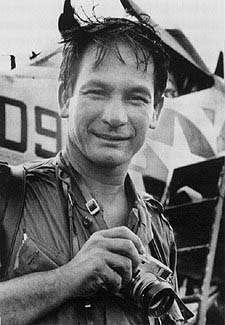
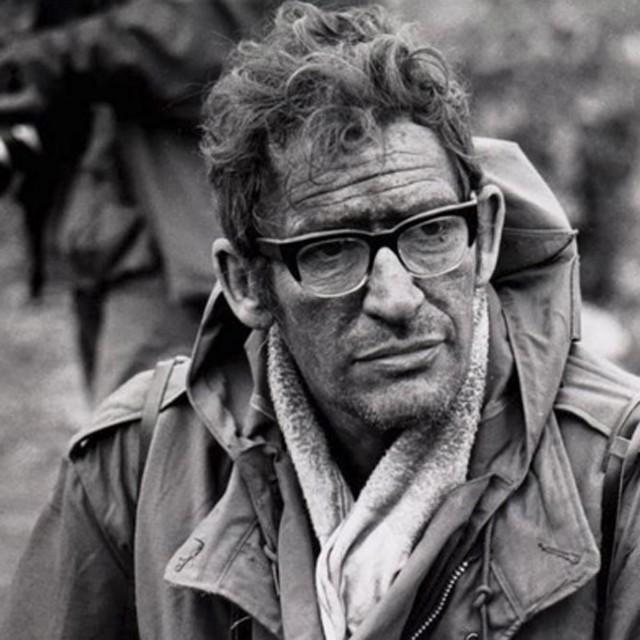
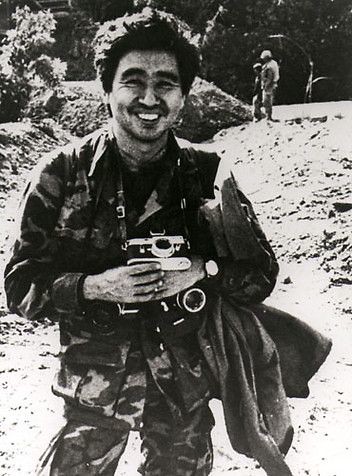
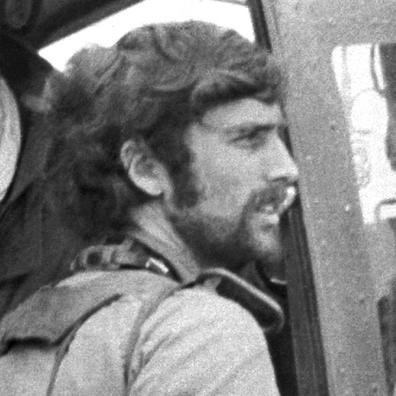
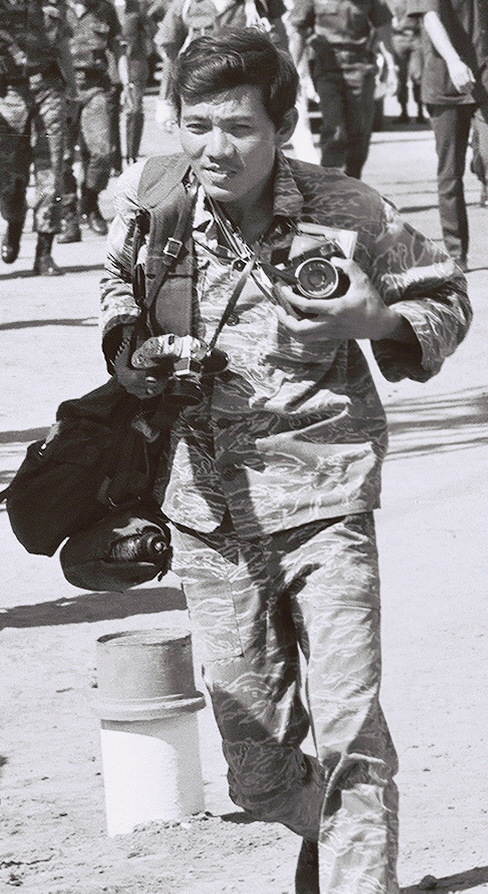
Jesse Stephens, an archaeologist with the Defense POW/MIA Accounting Agency, said the box would be kept at the agency’s lab at Offutt AFB that conducts continuing studies of remains from past wars in an attempt to identify and honor as many as possible of those who died in service but whose bodies weren’t recovered and buried at the time. The trace remains of the journalists and South Vietnamese were recovered from the crash site 35 years after the Huey helicopter was shot down during an ill-fated invasion of Laos aimed at cutting the Communist North’s Ho Chi Minh Trail. The search operation was conducted by the Defense Department’s accounting agency, but military authorities chose not to bury the remains in a national cemetery because those killed were not U.S. military personnel. Instead, the pieces found at the site but unidentifiable as those of any individuals were comingled to represent the four civilian photographers, the army photographer and the officers and crew aboard the craft.

Richard Pyle, the Saigon chief of bureau for The Associated Press at the time of the crash, pursued the missing helicopter for decades and accompanied the expedition that located it. He proposed that the unfinished Newseum, devoted to the news and those who cover it, would be the most appropriate resting place for the small, rectangular container. It was given a place of honor in the new Journalists Memorial shortly before the Newseum opened to the public in April 2008. The story of the photographers, the search for the crash site and later search for a place to preserve the remains are recounted in Lost Over Laos, a book published in 2003 by Pyle and Horst Faas, the AP’s Pulitzer Prize-winning photographer and photo editor. Both men have since died. The memorial, which houses giant glass panels etched with the names of hundreds of lost journalists, will be disassembled, and its future is undecided. However, former Rep. David Dreier, chairman of Tribune Publishing Co., is spearheading an effort to build a permanent Fallen Journalists Memorial in Washington. Barbara Cochran, who has held leadership posts in national newspaper and broadcast outlets for many years, is president of the foundation Dreier started. She said the group’s immediate focus is winning passage of legislation to enable the foundation to work with the National Park Service to identify a location and begin design and permitting work for a privately financed memorial. The process is expected to take several years. Although no decisions have been made, she said the foundation is open to discussion of designating the prospective memorial as a permanent site for the remains recovered from the Laos crash site.
(Michael Putzel was an AP war correspondent in Vietnam and covered the shootdown of the photographers’ aircraft. A photo he took of the crash site the next day was used decades later to identify the site where the remains were discovered.)
